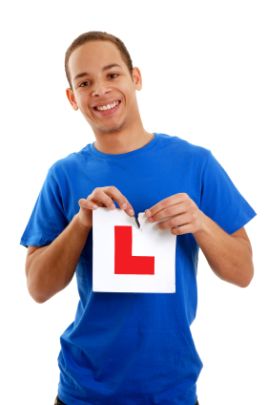Working out what a road sign means
There are many signs that you will see day in day out as a driver and are obvious to understand. For instance signs that tell you the maximum speed limit on the road you're on. For some reason, the no entry sign seems to be the one that is most recognisable for everyone.
However there are other signs that you won't know as you have never come across them, and some that you do know what they mean but forget.
But there are rules that can help you work out what a sign means, and this is particularly useful if you come across a sign in a theory test and have whittled it down to a couple of options but aren't sure. Sometimes knowing the rules outlined below can help you work out what the sign means:
First of all, if the sign is in a CIRCLE then this means that it is giving orders.
If the sign is in a TRIANGLE then it is giving a warning.
If the sign is in a RECTANGLE, it is giving information.
This simple knowledge can help you work out what a sign means. Now, within the above descriptions there are also colours that act as clues, and by combining the two you will have a good chance of working out what a sign means.
BLUE circles tell you things that you must do, whilst red rings tell you things that you must NOT do.
Blue rectangles give general information, green ones tell you route directions on primary roads, white with black borders give route directions on non-primary roads.
Related Articles...
The lane discipline of a motorway
Driving on a motorway is not something you will be able to do until you pass your test, and therefore it is important to understand as much about motorway driving as you can before your first...
Driving Theory
Practice makes perfect. It is a known fact that if you practice a particular skill, you get better at it. This is true of mental skills such as performing mental arithmetic: the more you try to do...
Rules regarding the use of seat belts
When it comes to seat belts, you should be certain of what the rules are with regard to seat belt usage, and your responsibilities as the driver in terms of other passengers in your vehicle and...
What to expect at a hazard perception test
The test has fourteen different clips, as outlined in the article entitled 'how to pass the hazard perception test'.
Each of those clips starts counting down from ten to zero, in order to...
The automatic transmission explained
Whilst the automatic transmission system is very clever, you still need to have some control over it, and this is where the selector lever comes into play, which is in the place that you would have...
Your ignition system explained
The ignition system is of course an essential part of the technology that allows cars to function, and without it you would not get very far. But what does it do? Well the system provides the...
Car Driving Test Fees
This article looks at the costs, which were correct as of October 2009.
A standard car and motorcycle theory test costs £31.
In terms of the practical test, the price is a good deal...
Vehicle Test Certificate Explained
The MOT test is no doubt something you have heard of before, but you don't pay that much interest to what it actually is before you are a car driver and faced with the prospect of requiring such a...
What a slippery road surface sign could mean
The problem with a slippery road surface sign is this: whilst you know what it means, you don't know what it means. If that sounds confusing, then the point is simply this - what is it that is...
Testing your driving ability
The driving part of the test to assess if you are safe to let on the roads is called the practical test, and it lasts in the region of 40 minutes in total. The purpose is to assess if you can drive...
Back to home page of driving theory test questions

